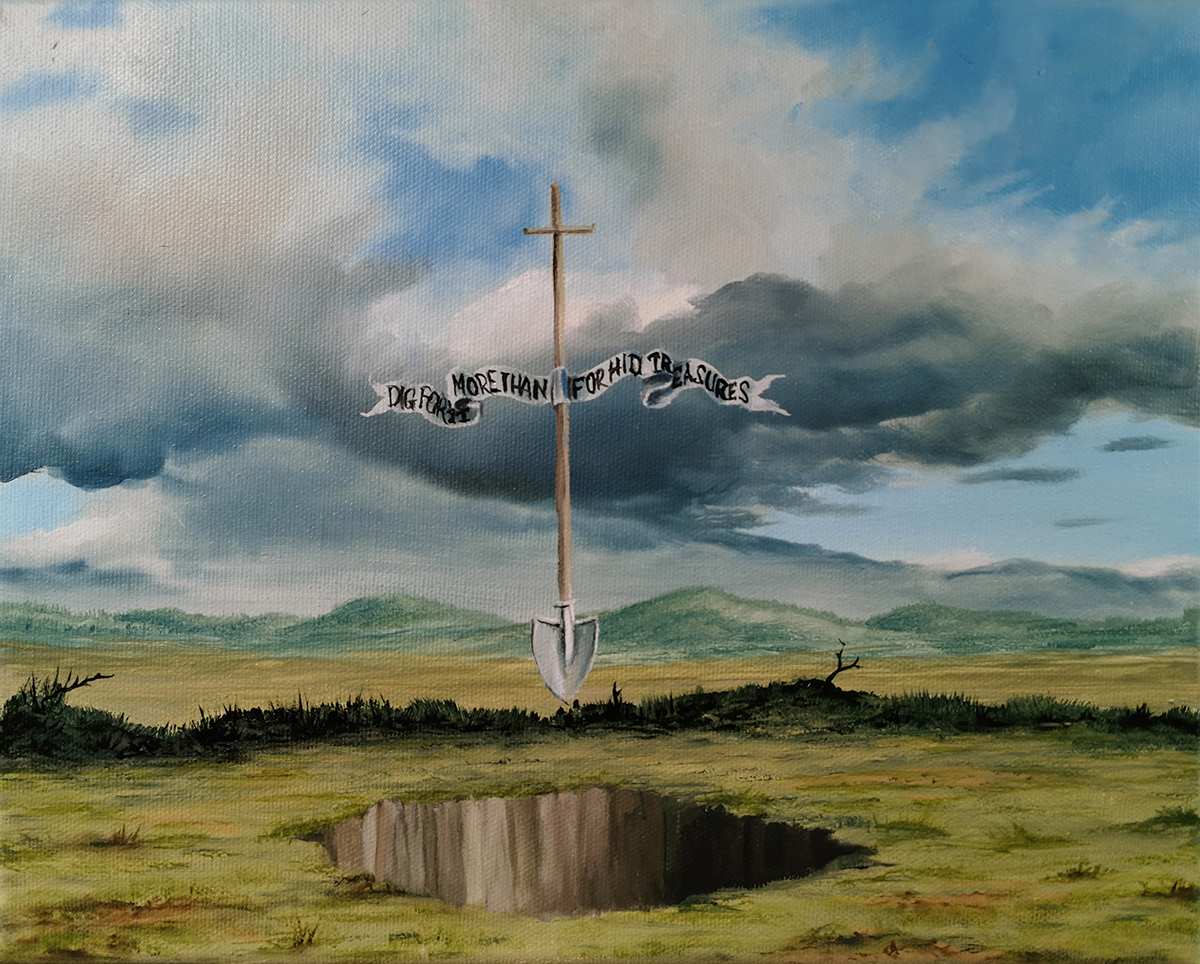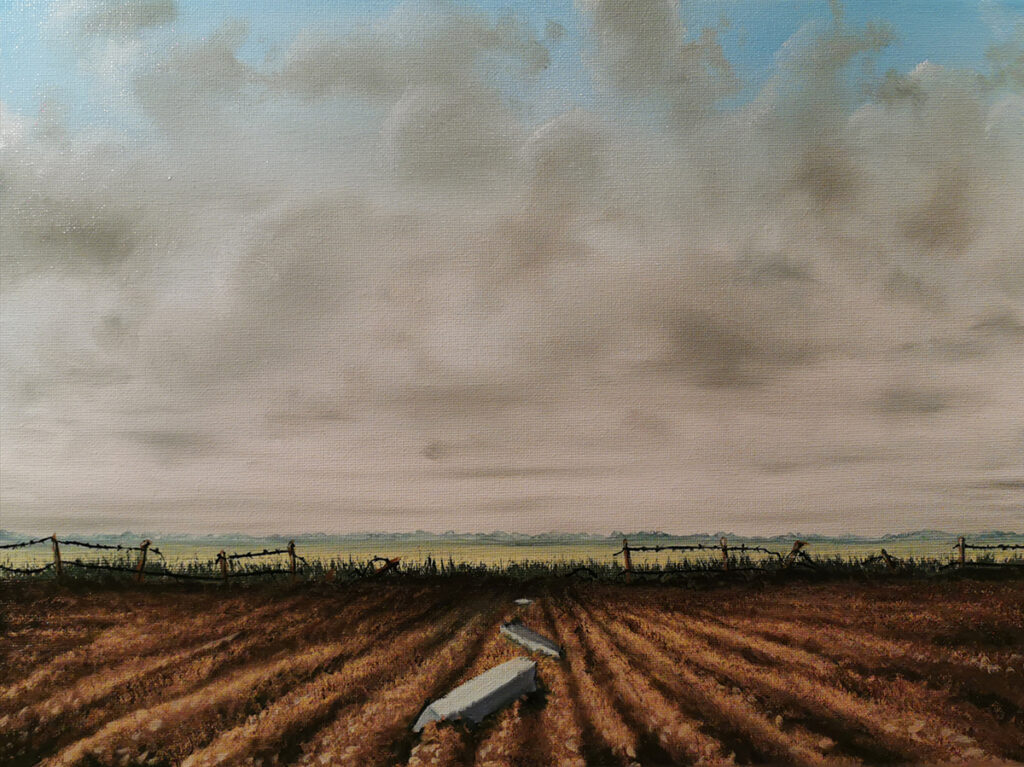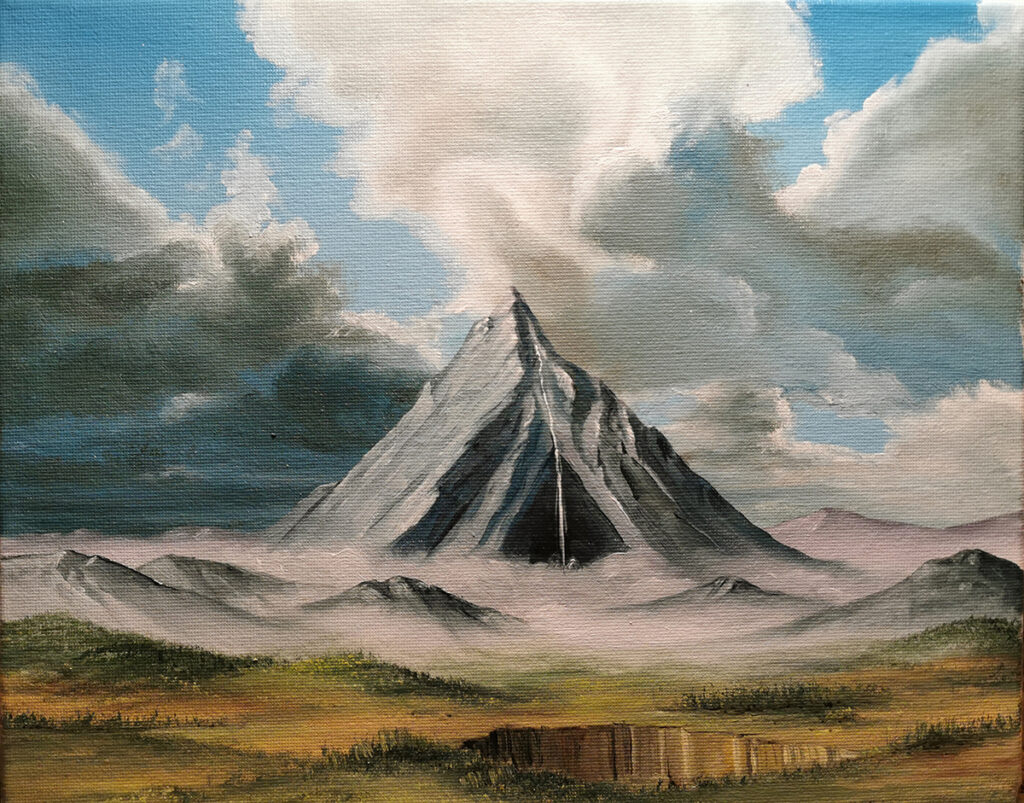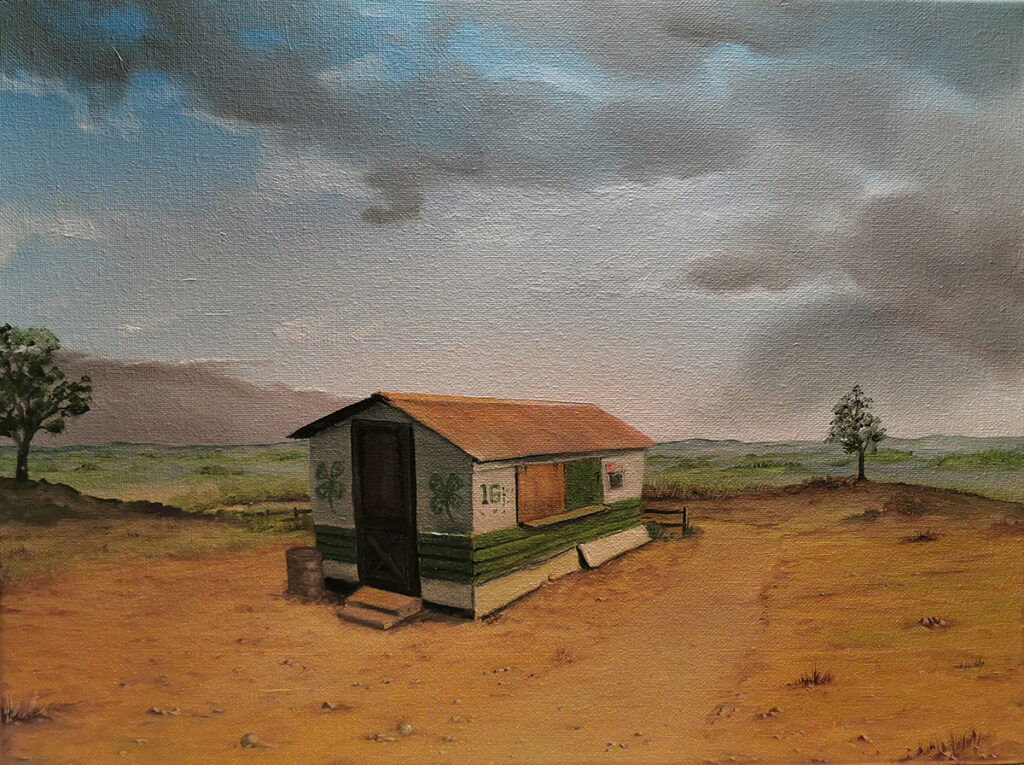
TAKE US BACK TO THAT PLACE IN THE SOUL
by Edward M. Gómez
Sometimes, big things, like ambitious, expansive, multilayered ideas, come in small packages.
Over the past two-and-a-half years, the artist Eric Wright, who was born in 1962 and brought up in Mt. Gilead, a small town in north-central Ohio, and who has lived and worked in London, England, for about three decades, has been making a series of oil paintings that evoke his native region as a strangely atmospheric place in the imagination. Their imagery has been informed by the artist’s memories of rural Ohio and the history of that part of the American Midwest as it was reflected and conveyed through the names of places and institutions, the folklore, and the local traditions with which he grew up. Wright’s art has also been shaped by his ideas about how he wants his landscape pictures to look and the kind of energy he would like them to exude.
Now, a selection of these works will be shown publicly for the first time ever in Eric Wright: Ohio Lands, Heap of Testimony, an exhibition opening on September 8 at the Horse Hospital, one of London’s most cutting-edge, independent art centers, in the city’s central Bloomsbury district. The exhibition will run through October 2.
To date, in his ongoing “Ohio Lands” series, from which the exhibition takes its name, Wright has produced about 70 paintings in oil on canvas or canvas panels, some of which measure just 18 by 24 centimeters (7 by 9.4 inches). Others are 24 by 30 centimeters (9.4 by 11.8 inches) or 40 by 50 centimeters (15.75 x 19.7 inches) in size. Even the artist’s newest painting, which comes in at 50 by 70 centimeters (19.7 by 27.5 inches), is relatively small.
Still, into his pictures of mountain ranges, lonely buildings, and broad, empty fields, Wright packs a wistful sense of place, the wafting air of history, and a hint of epic narrative, even if the exact details or contours of the stories his paintings might aspire to tell never come into sharp focus — and that’s the point.
Wright, who studied graphic design at Ohio University and is primarily self-taught as a painter, told brutjournal that, when he was growing up, “there was very little opportunity to see art of any kind in person.” The city of Columbus, which lies roughly 50 miles to the south of Wright’s hometown, had a small art museum, but there was no public transport available to allow a teenager to easily travel on his own. Wright added, “Mt. Gilead was isolated. There were museums and galleries in Cleveland, about 100 miles to the northeast of my small town, but that was considered a dangerous foreign land, and you would never consider asking to be taken to such a place.”

In the 1980s, Wright lived in New York, where he soaked up the energy of the city’s art scene at what now, in retrospect, appears to have been an especially fervent time in many creative fields. He recalled, “I went everywhere; the Metropolitan Museum of Art was a favorite, but I also saw a lot of performance art at such venues as Franklin Furnace and P.S. 122. More than being directly influenced visually, I was learning how to lead a life that was creativity first and money last.”
It might come as a surprise to some viewers of Wright’s work that he was, he admits, significantly influenced by the late Bob Ross, an American painter whose “The Joy of Painting” art-instruction television program was presented in the United States by PBS (the Public Broadcasting Service) from 1983 to 1994. Even in its time, Ross’s style of art was regarded by mainstream art-world taste-makers as kitsch.
Nevertheless, Wright explained, “What drew me in was that Ross was fearless in the face of potential ridicule and he could do a landscape in 30 minutes! I studied his techniques, because I wanted landscape to be a big part of my work. I modified his method almost immediately, as his look was not the look I was after, but I admired his gung ho spirit.”
Whatever lessons Wright may have gleaned from Ross’s TV tutorials and his other experiments in the studio over the years, today he follows a procedure that has shaped the overall look and character of his “Ohio Lands” series. In all of the pictures in the series, which are essentially landscapes, even when they feature solitary buildings or other subjects as their compositions’ central anchors, the sky plays a big role.
“I start a painting with the sky; it sets the mood,” Wright explained. He studies photographs of the sky that he shoots himself but he puts them away, out of sight, while working on his paintings.

With such biblical titles as “Dome of the Firmament,” “Their Altars Are as Heaps in the Furrows of the Fields,” and “Dig More than for Hid Treasures” (in fact, such phrases come straight out of the Christian Bible’s Old Testament), and their dominant expanses of dramatic, shape-shifting, energy-field skies, Wright’s paintings begin to conjure up the portentous sense of history and potent natural forces that is as much their subject as any of the mountains or old architectural structures they also depict.
Wright explained, “I have my own highly personal motivations and reasons for creating these works. I think that making literal stories for people to learn about me is boring and misses the point of making art in the first place. So viewers can take whatever they might find from them.”

To a large degree, Wright’s paintings also invite viewers to bring their own narratives to them. Looking beyond anything his art literally portrays, the artist observed, “Our own little triumphs and overwhelming little heartaches are epic to ourselves; they move and form us. So that is how it should it be in a painting.”
Resources
The Horse Hospital, an alternative-space arts center in London, England:
https://www.thehorsehospital.com/
To purchase a copy of Ohio Lands: Paintings by Eric Wright, which was produced in conjunction with River House Arts/Baldoni Contemporary, Toledo, Ohio, and serves as a catalog for the current Eric Wright exhibition in London, see this page of the Horse Hospital’s Website:
https://www.thehorsehospital.com/shop
Artist Eric Wright’s website:
https://www.eric-wright.net/



